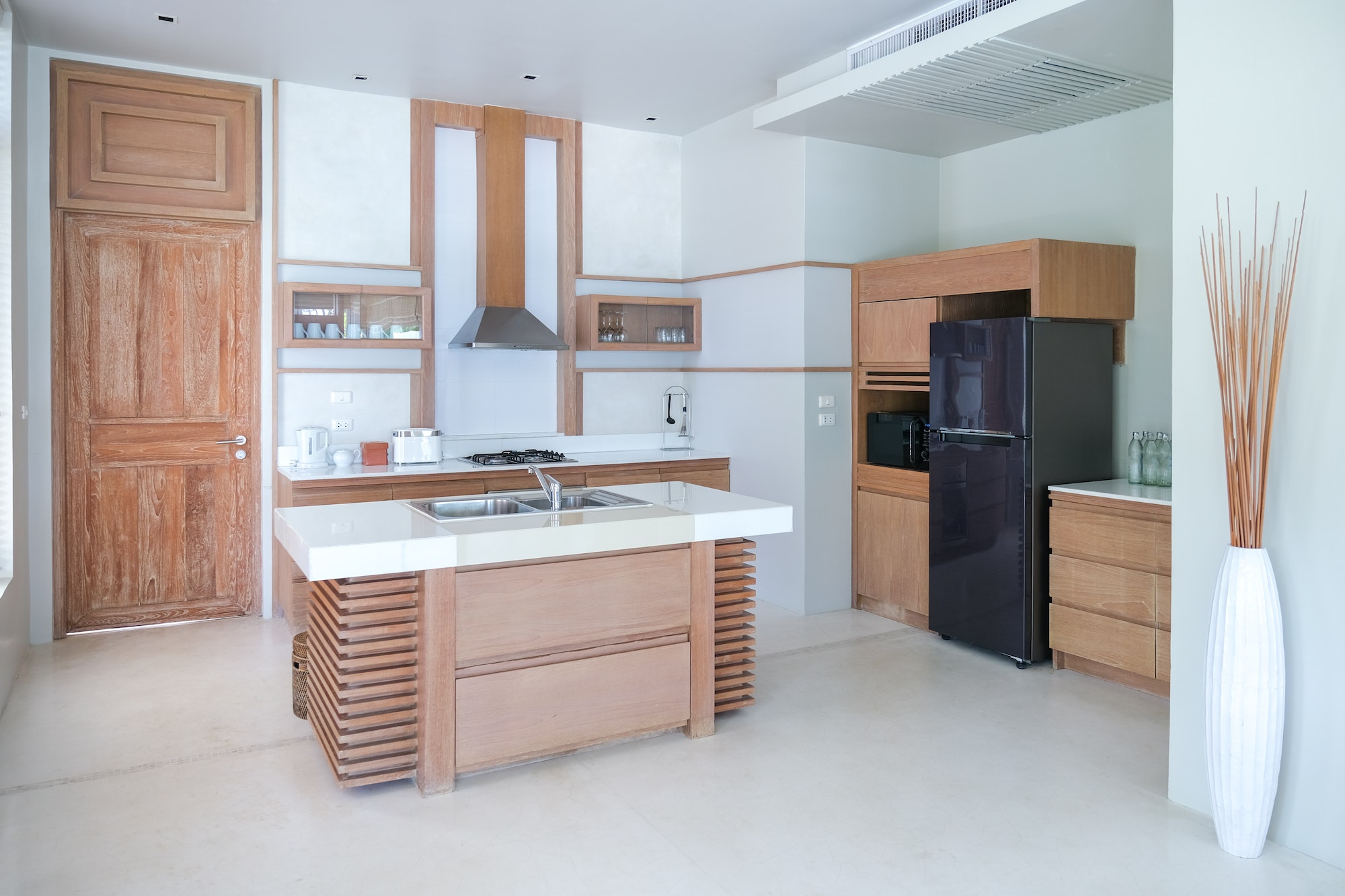A well-designed kids’ playroom can be a magical space where creativity and imagination run wild. Start by incorporating vibrant colors and playful themes that cater to your child’s interests. Whether it’s an underwater adventure, a jungle safari, or a space exploration theme, decorating the room with interactive elements like wall decals, murals, or themed rugs can instantly transport children into a world of wonder.
Design Principles for an Engaging Playroom
Color and Creativity
Research from the Good Housekeeping Institute suggests that children benefit tremendously from well-designed play spaces. Rachel Rothman, chief technologist, emphasizes that “kids learn so much through play. As adults, we’re here to give them the tools to facilitate learning and empower them.”
Flexible Zones and Storage
Create distinct play areas that support different types of development:
- Building Zone: Include blocks, Lego, and construction toys to develop problem-solving skills
- Imagination Area: Set up a dramatic play space with dress-up clothes and props
- Art Corner: Provide creative materials for expression
- Reading Nook: Create a cozy space for quiet time
Strategic Storage Solutions
Implement smart storage that encourages independence. Open shelving allows children to access and return toys easily. The grOH! Playroom design approach recommends creating balanced play environments with intentional toy selection across eight developmental play categories.
Incorporating Biophilic Design
Interestingly, a study on hospital playroom design revealed the importance of nature elements in children’s spaces. Researchers found that incorporating natural light, windows, and organic elements can significantly improve children’s developmental health. Consider adding:
- A small indoor plant
- Natural light sources
- Nature-themed wall decals
- Wooden toys and furniture
Growing with Your Child
Design the playroom to evolve with your child’s interests. Invest in versatile storage like IKEA TROFAST units that can adapt from toddler toys to school supplies. Choose toys and furniture that can be repurposed as your child grows.
Expert Insights
Child psychologist Anne Gillyard notes that “When kiddos have the opportunity to practice independent play in a space that they want to be in, they have more opportunity to build important skills, including problem solving, critical thinking and negotiating outcomes.”
The ultimate goal is to create a space that inspires creativity, supports developmental growth, and brings joy to your child’s play experiences.
Citations:
[1] https://www.goodhousekeeping.com/home/decorating-ideas/g42410215/kids-playroom-ideas/
[2] https://www.thespruce.com/decorating-a-kids-playroom-452599
[3] https://digitalcommons.bryant.edu/cgi/viewcontent.cgi?article=1053&context=apjou
[4] https://nurtureandthriveblog.com/kids-playroom-ideas-areas/
[5] https://grohplayrooms.com/blog/design-your-playroom-with-these-8-play-zones
If you are looking for some inspiration, our collection of kids’ playroom ideas below will spark your imagination.
1. Takatsuki House by ALTS DESIGN OFFICE
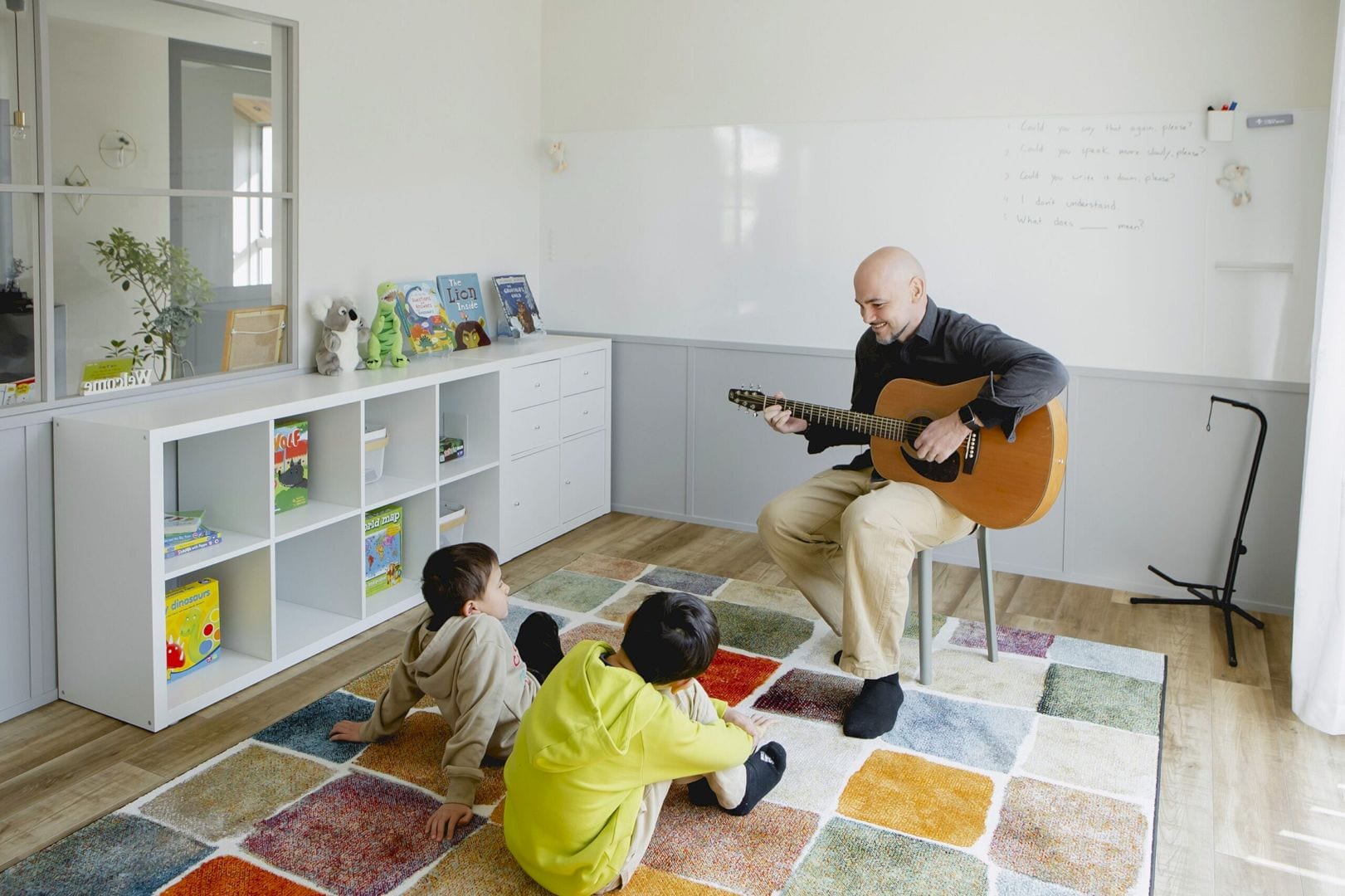
Designed by ALTS DESIGN OFFICE, Takatsuki House is a project about Takatsuki’s English conversation class combined housing located in Japan. The classroom space serves as a study space and play space. The colorful, patterned rug adds a playful element to the room, while the open shelving filled with books and toys provides easy access to materials that inspire imaginative play.
Photography: ALTS DESIGN OFFICE
2. In the Mood by Ieva Prunskaite from Prusta
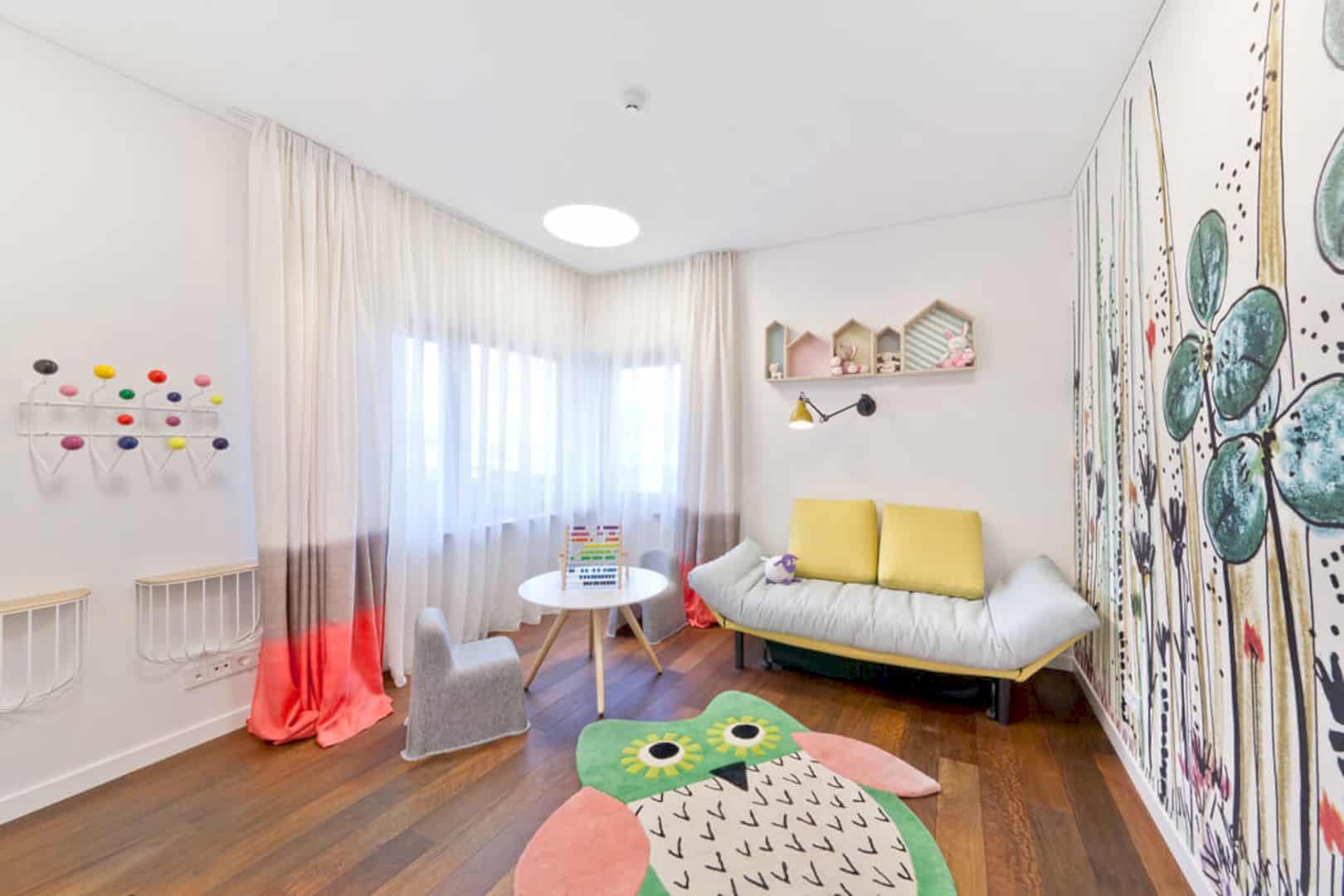
The next inspiration can be found in In the Mood. The soft, neutral color palette in this playroom creates a calming atmosphere, while the whimsical wall mural of a forest scene sparks curiosity and wonder. The colorful accents, such as the geometric wall hanging and the vibrant rug, add a playful touch. The comfortable sofa and the small table provide cozy spaces for children to relax and engage in creative activities.
Photographer: Karlas
3. Fairfield Hacienda by MRTN Architects
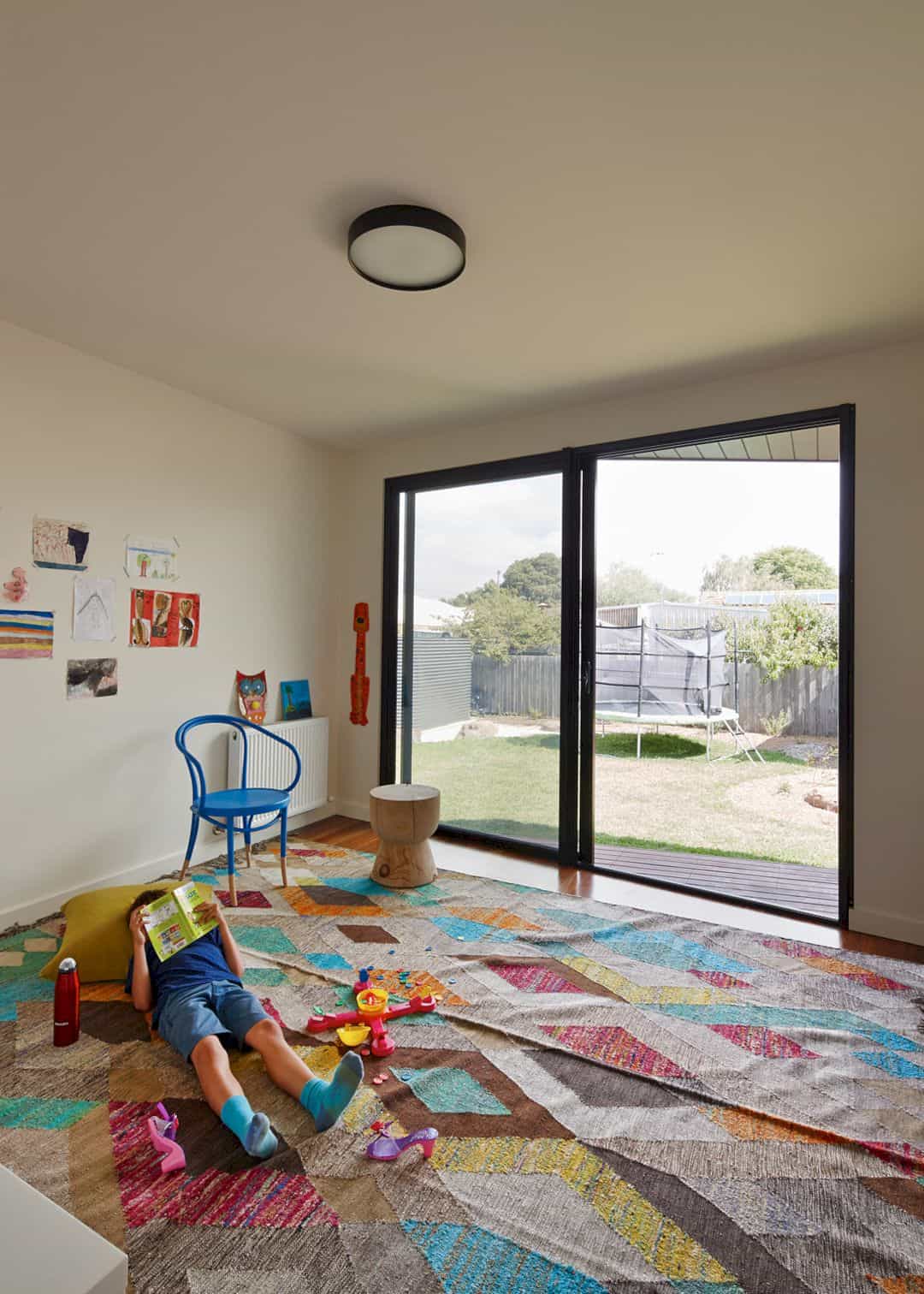
Fairfield Hacienda has a beautifully designed kids’ playroom that emphasizes simplicity and open-ended play, perfect for sparking creativity and imagination. The large windows bring in abundant natural light, making the space feel airy and inviting. The colorful geometric rug and playful decor, including children’s artwork displayed on the wall, add a vibrant touch that encourages self-expression.
Photographer: Peter Bennetts
4. East Williamsburg Rowhouse by Barker Freeman
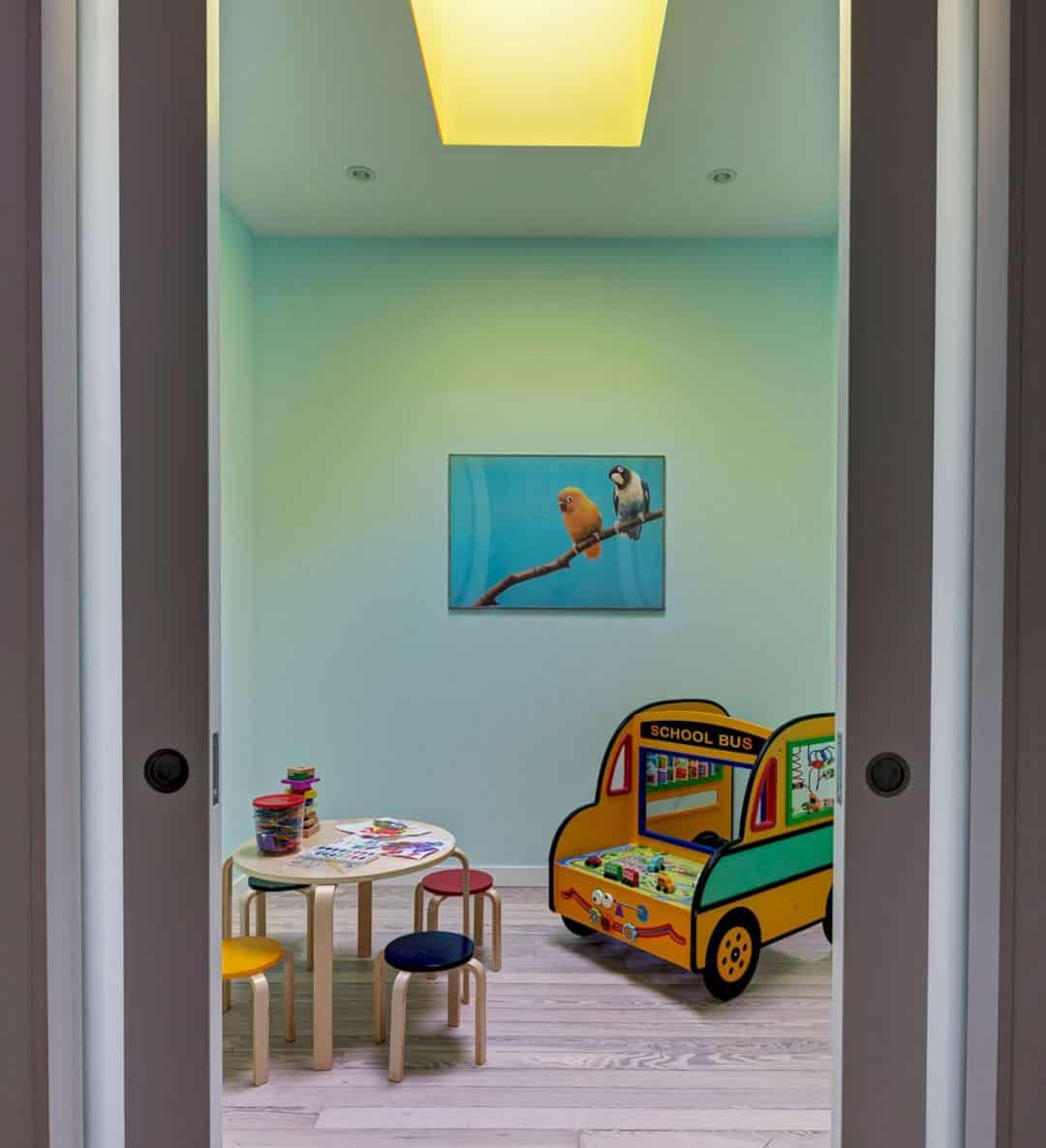
Designed by Barker Freeman, East Williamsburg Rowhouse is a family house with a perfect example of a space that sparks imagination. The soft, calming blue walls create a serene atmosphere, while the playful school bus bed adds a touch of whimsy. The colorful toys and art supplies encourage creativity and exploration. The natural light streaming in from the skylight adds a cheerful ambiance, making this playroom a delightful place for children to learn and play.
Photography: Barker Freeman
5. Amusement Casa by HAO DESIGN
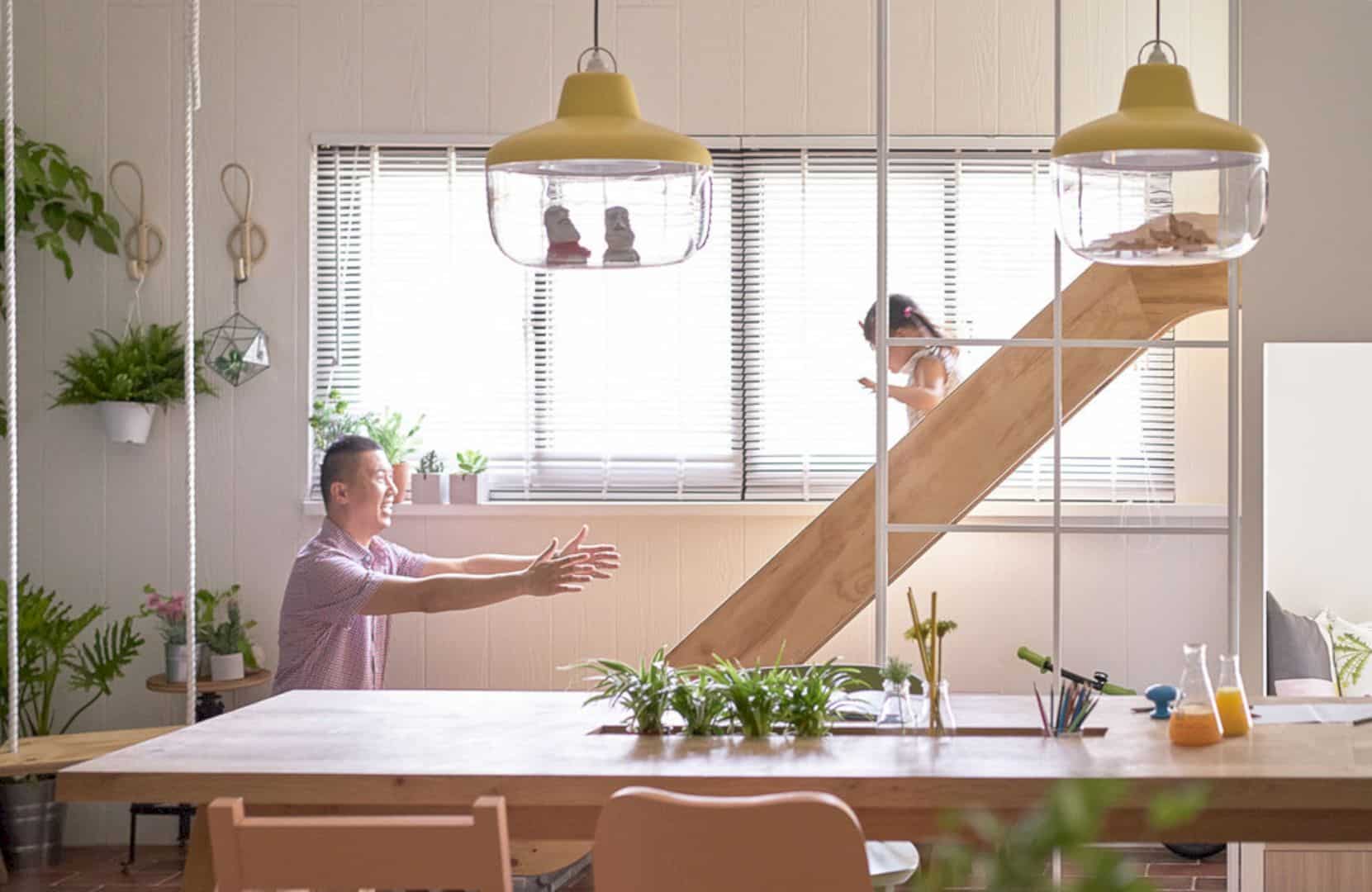
The next kids’ playroom idea can be seen in Amusement Casa. This playroom creatively integrates fun elements with a functional space, perfect for sparking a child’s imagination. The wooden slide is an exciting feature, blending play with indoor activity, and encouraging children to stay active even within the home. The warm, natural lighting and plant-filled decor give the room a fresh, lively atmosphere that feels connected to nature, promoting a calming yet playful environment.
Photography: HAO DESIGN
6. Bright House by HAO DESIGN
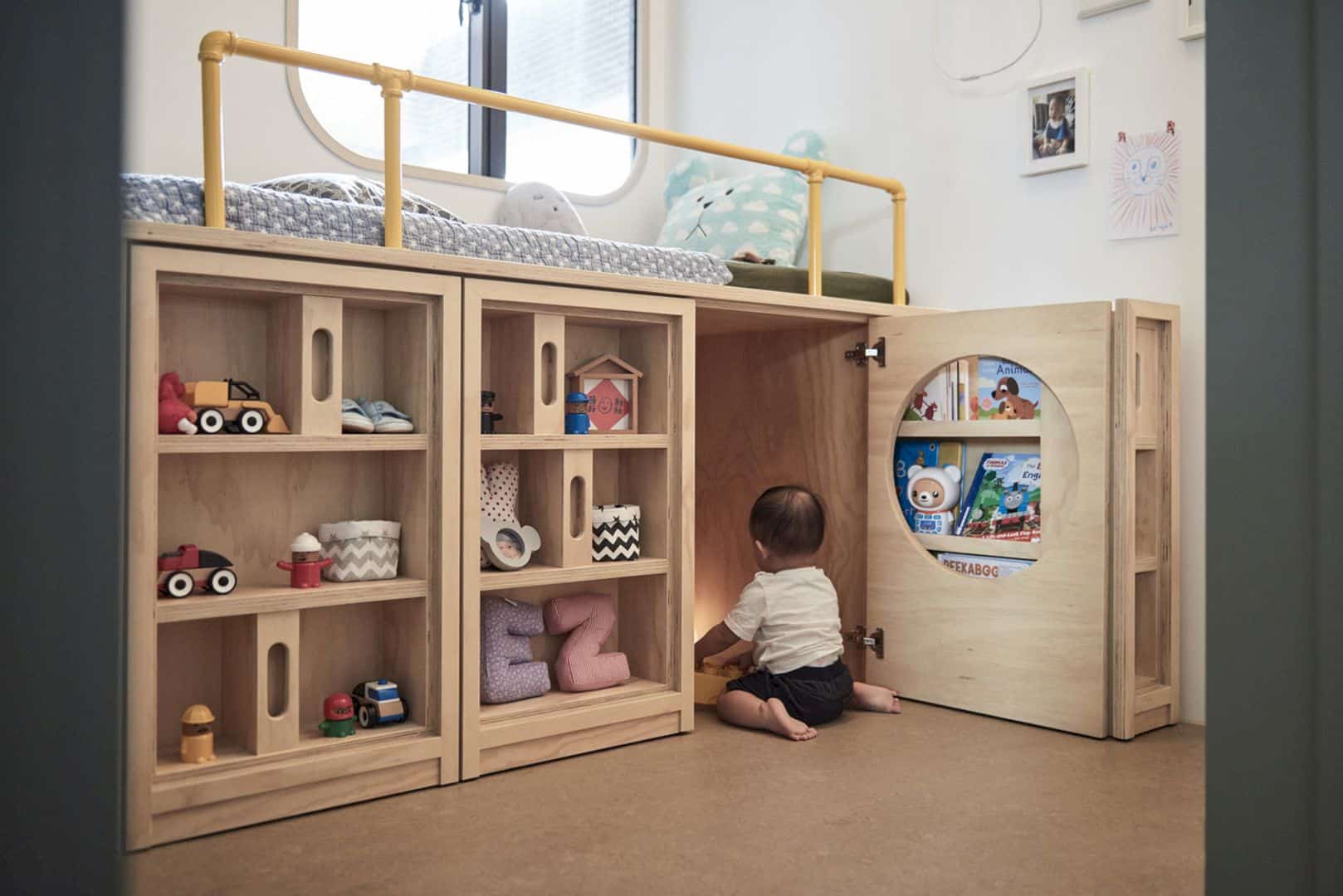
As you can see in Bright House by HAO DESIGN, the playroom design beautifully merges creativity and functionality, making it ideal for sparking the imagination in young children. The use of a lofted bed with built-in shelving provides both storage and a playful hideaway underneath, perfect for creating secret spaces where a child’s imagination can flourish. The cozy nook with a circular cut-out door invites exploration and independent play, giving kids a private spot for quiet time or imaginative storytelling.
Photography: HAO DESIGN
7. The Lego Play Pond by HAO DESIGN
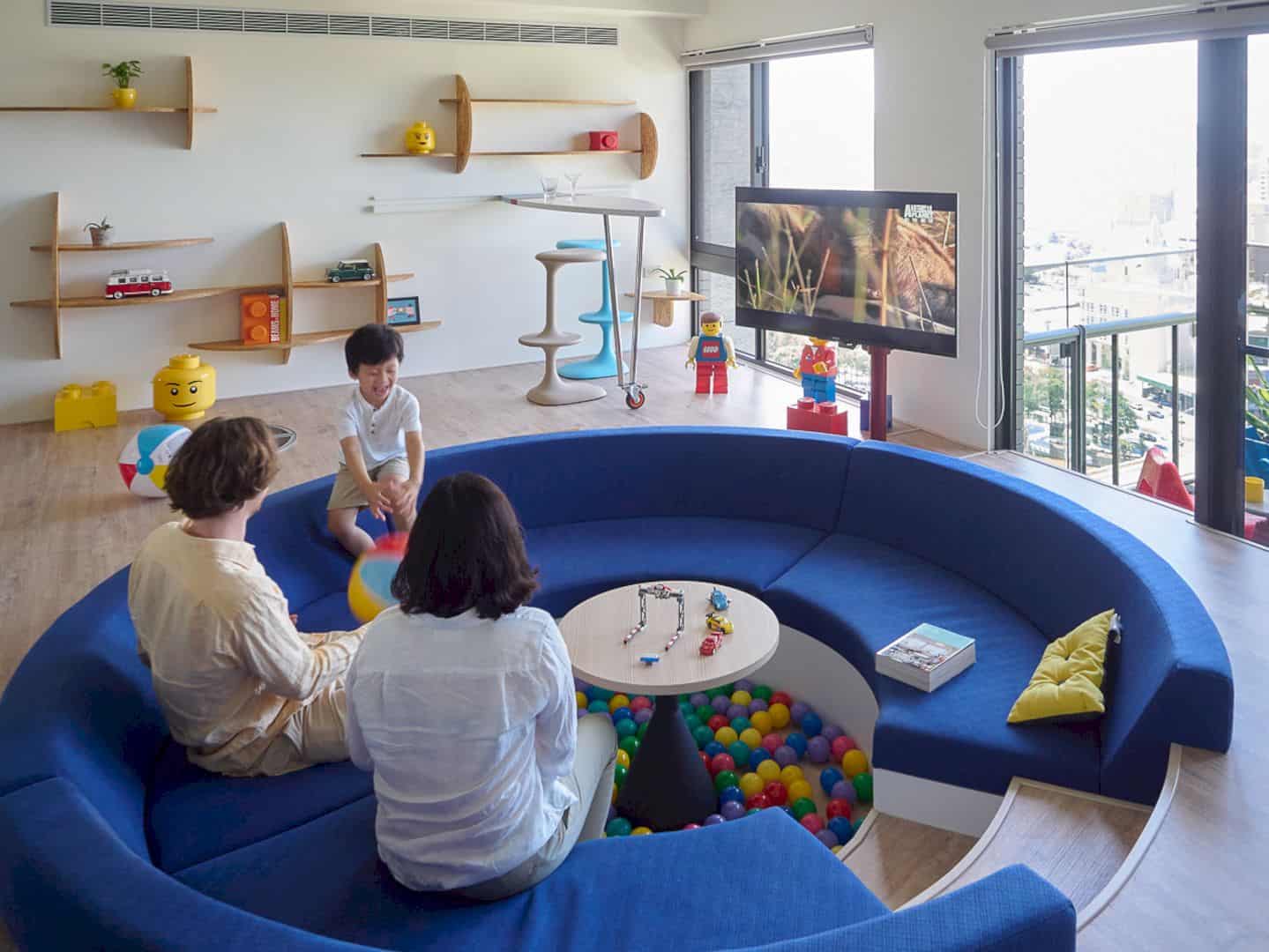
The Lego Play Pond by HAO DESIGN chooses Lego as the main theme to design and decorate its kid’s playroom. The circular seating area with a ball pit in the center creates a dynamic environment where kids can engage in group play while also providing a cozy spot for relaxation or storytelling. The colorful design, coupled with LEGO-themed decor and playful shelving, encourages a sense of adventure and discovery.
Photography: HAO DESIGN
8. Innocence in Zen by HAO DESIGN
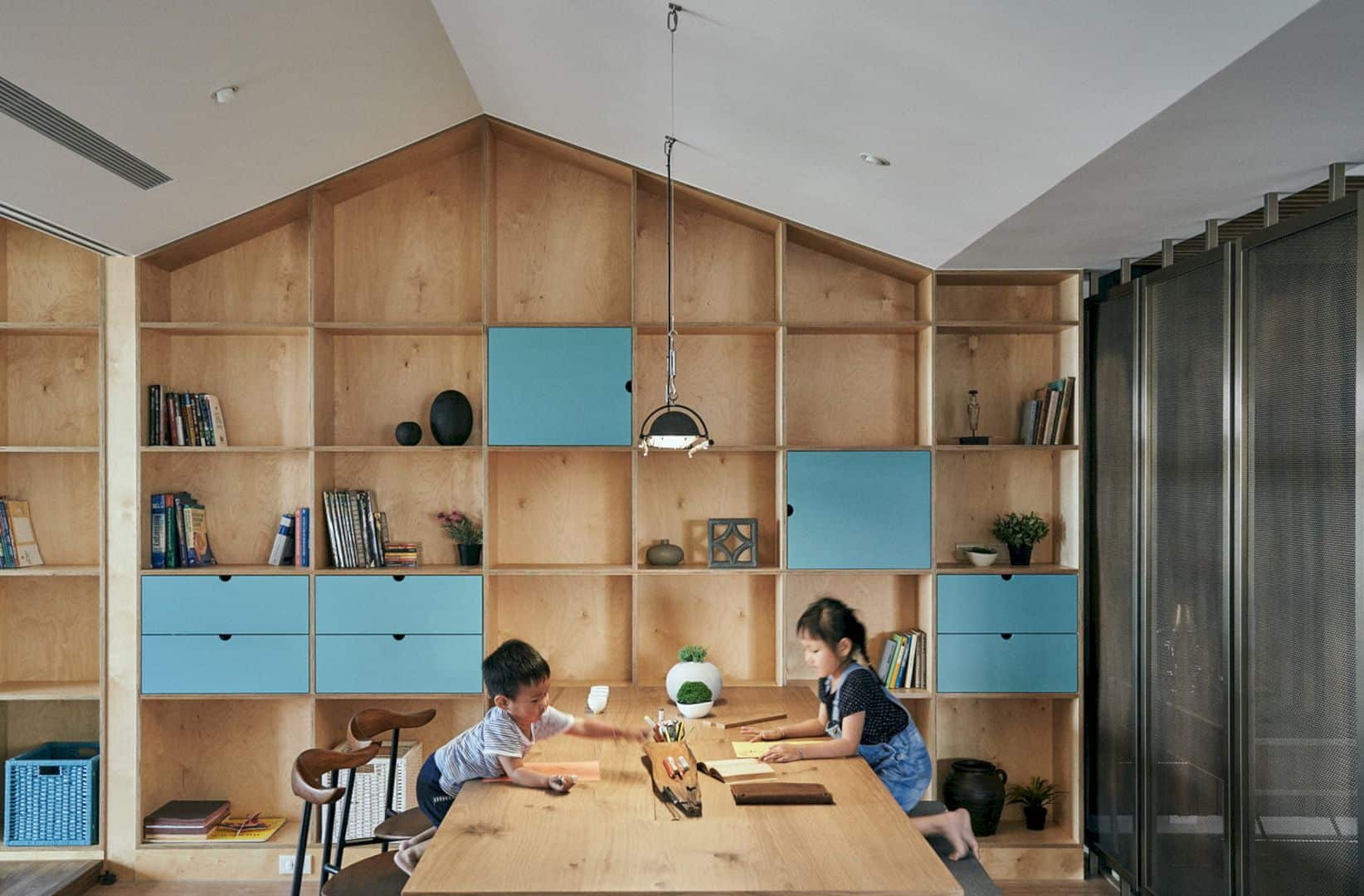
The next kids’ playroom idea comes from Innocence in Zen by HAO DESIGN. This house has a simple zen interior and a playground for the kids. The wooden table is the center of the room for the kids where they can play and enhance their creativity while the wooden shelves create a free-cluttered look and serve as storage for books and toys.
Photography: HAO DESIGN
9. Dreaming Of Light by Tobi Architects
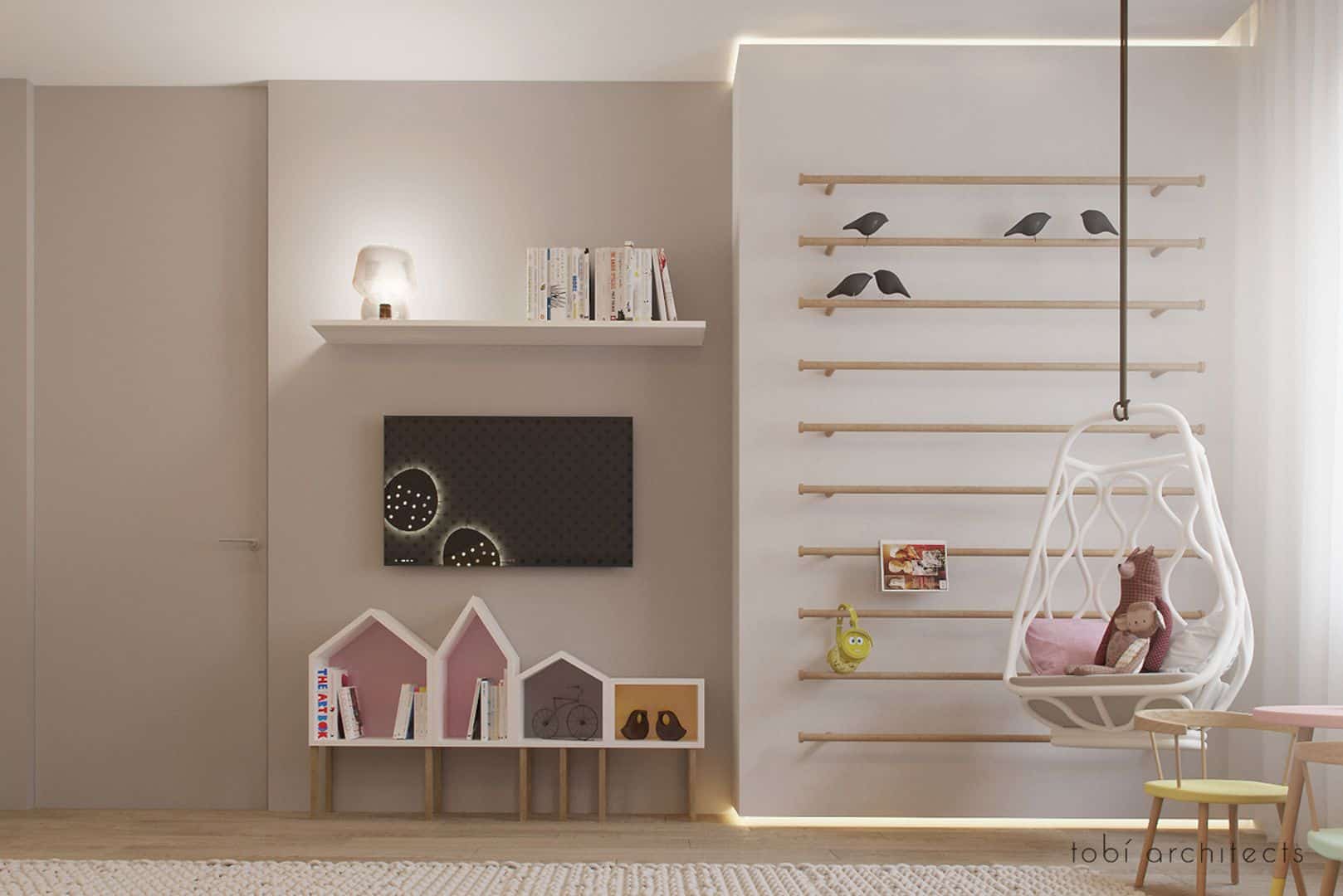
Dreaming Of Light by Tobi Architects uses soft, neutral tones to create a calming atmosphere in its kids’ playroom, while the playful bird accents and a hanging chair add a touch of whimsy. The built-in bookshelf with house-shaped compartments encourages imaginative play and storytelling. The cozy rug and plush toys invite relaxation and comfort. This space is designed to spark creativity and inspire dreams.
Photography: Tobi Architects
10. The Renovation of 12 Foot Wide Rowhouse by Barker Freeman
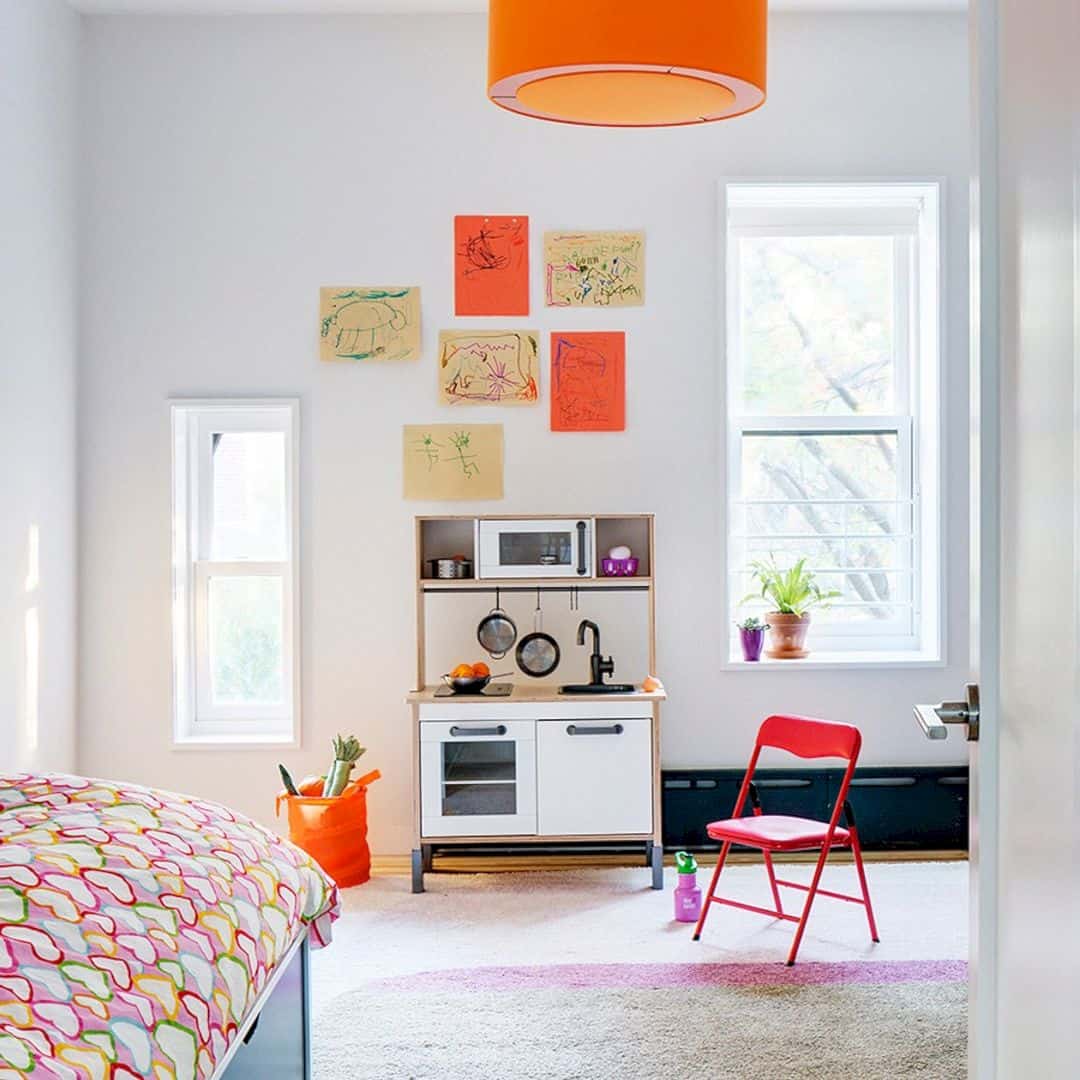
In The Renovation of 12 Foot Wide Rowhouse by Barker Freeman, The playful bedroom design seamlessly integrates a cozy sleeping area with a stimulating play space in this house. The bright orange pendant lamp adds a cheerful touch, while the gallery wall of children’s artwork showcases their creativity. The IKEA DUKTIG play kitchen encourages imaginative play and role-playing, sparking creativity and imagination.
Photographer: Francis Dzikowski
FAQs
How often should I update the playroom?
Update the playroom annually or when you notice your child’s interests changing. Rotate toys and rearrange spaces to keep the environment fresh and engaging.
What’s the ideal size for a playroom?
There’s no perfect size. Even a small, well-designed space can be incredibly effective. The key is maximizing the available area with thoughtful organization.
How can I make the playroom educational?
Include toys that encourage learning through play, such as building blocks, art supplies, and open-ended creative materials that develop problem-solving and imagination.
Discover more from Futurist Architecture
Subscribe to get the latest posts sent to your email.
